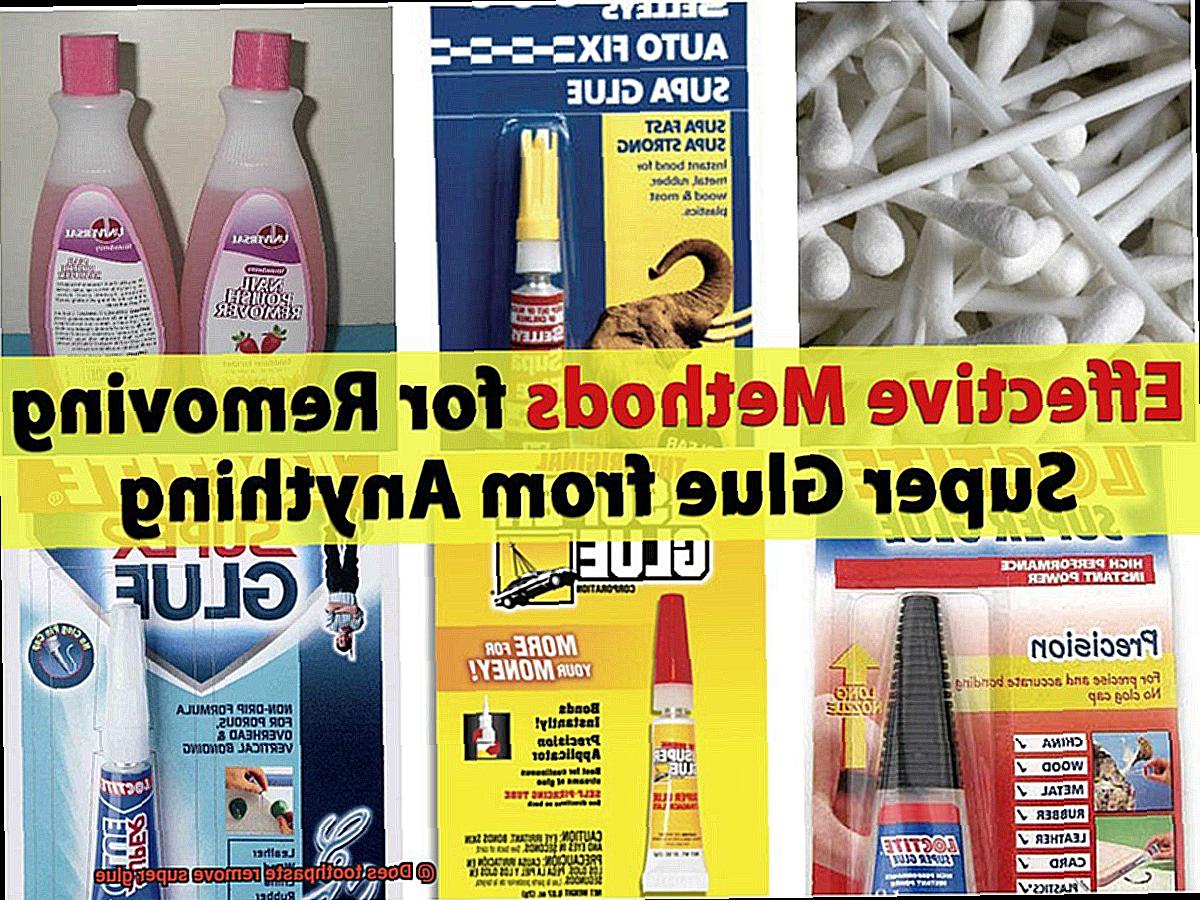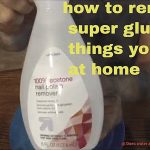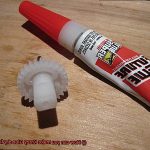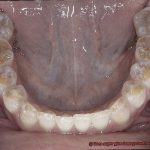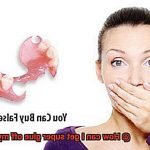Imagine this: you’re knee-deep in a DIY project, determined to fix that broken heirloom or piece together a shattered masterpiece. But then disaster strikes – your fingers are suddenly glued together, trapped in a sticky mess of super glue. Panic sets in, and you frantically search for a solution. That’s when you remember the whispered secret of toothpaste as a superhero against super glue mishaps. Is it just an urban legend or could toothpaste actually be the unexpected hero we need? Get ready to uncover the truth behind this tantalizing tale.
Picture it: you’re delicately reassembling a precious porcelain figurine, focused on every painstaking detail, when an unwelcome blob of super glue finds its way onto your fingertips. Cue the chaos. In your moment of desperation, you recall whispers about toothpaste’s magical powers to dissolve super glue. Could it really be as simple as smearing some minty freshness on your fingers and washing away your sticky nightmare?
To understand whether toothpaste can truly remove super glue, let’s dive into the chemistry behind these everyday products. Super glue, known scientifically as cyanoacrylate adhesive, forms unbreakable bonds thanks to a chemical reaction with moisture in the air. On the other hand, toothpaste boasts an arsenal of mild abrasives, detergents, and a little-known gem called baking soda. This potent combination works wonders in banishing stains from our pearly whites – but can it conquer the might of super glue?
While there isn’t any scientific research specifically examining toothpaste’s prowess against super glue removal, countless anecdotes suggest there might be something to this unconventional hack. The abrasives in toothpaste could weaken the bond between super glue and skin or surfaces while its gentle detergents may dissolve the adhesive properties of the glue. So, before you resort to harsh chemicals or painful peeling, why not give your trusty tube of toothpaste a shot at saving the day?
Now, hold on a second before you go squeezing out an Everest-sized mound of toothpaste onto your sticky situation. It’s important to note that results may vary. The effectiveness of toothpaste as a super glue remover depends on factors like the type and age of the glue, as well as the surface it’s adhered to. But hey, when you’re stuck in a glue-induced pickle, trying out this quirky
What is Super Glue?
Contents
- 1 What is Super Glue?
- 2 Theories Behind Toothpaste’s Ability to Remove Super Glue
- 3 Abrasive Properties of Toothpaste
- 4 Chemical Properties of Toothpaste
- 5 Limited Scientific Research on the Effectiveness of Toothpaste in Removing Super Glue
- 6 Steps to Use Toothpaste as a Remedy for Super Glue Mishaps
- 6.1 Step 1: Assess the Affected Area
- 6.2 Step 2: Choose the Right Toothpaste
- 6.3 Step 3: Apply Toothpaste to the Stain
- 6.4 Step 4: Gently Rub the Toothpaste
- 6.5 Step 5: Let the Toothpaste Sit
- 6.6 Step 6: Scrub or Scrape off the Glue
- 6.7 Step 7: Rinse and Repeat if Necessary
- 6.8 Step 8: Clean and Dry the Surface
- 7 Potential Side Effects of Using Toothpaste to Remove Super Glue
- 8 Specialized Adhesive Removers Available in the Market
- 9 Conclusion
Prepare to be amazed as we unravel the captivating world of Super Glue. This remarkable adhesive, also known as cyanoacrylate adhesive, has transformed the way we bond objects together. From its chemistry to its diverse uses, this article delves into the wonders of Super Glue.
The Chemistry of Super Glue:
At the heart of Super Glue lies its secret ingredient – cyanoacrylate. These unique molecules possess a structure that enables rapid polymerization when exposed to moisture. As a result, when Super Glue comes into contact with even the tiniest amount of moisture, it forms an unyielding bond, creating a stronghold between surfaces.
Versatile Bonding Power:
Super Glue boasts a versatility like no other adhesive. It effortlessly bonds an array of materials, including metal, plastic, rubber, ceramic, wood, and select fabrics. Whether you’re repairing household items or embarking on a creative endeavor, Super Glue is your go-to adhesive.
Lightning-Fast Drying Time:
One of Super Glue’s most astonishing traits is its lightning-fast drying time. Within mere seconds of application, it begins to polymerize and solidify, resulting in an unbreakable bond. This rapid-drying feature not only saves time but also allows for immediate use of bonded objects.
Household Repairs:
In the realm of household repairs, Super Glue reigns supreme. Its dependable strength and durability make it an invaluable tool for fixing broken ceramic dishes, mending shattered toys, or reattaching loose items. However, exercise caution while handling it to avoid contact with skin and eyes.
Crafty Creations:
For DIY enthusiasts and craft lovers alike, Super Glue is an essential companion for bringing imaginative creations to life. Its unwavering strength and versatility make it perfect for assembling intricate models, crafting jewelry, or fashioning homemade decorations. Let your creativity soar, knowing Super Glue will steadfastly hold your masterpieces together.
Theories Behind Toothpaste’s Ability to Remove Super Glue
Look no further than your bathroom cabinet for a simple solution – toothpaste. Yes, you read that correctly. Toothpaste has the potential to be a superhero, coming to your rescue and freeing you from the bonds of stubborn super glue.
But how does toothpaste work its magic? Let’s delve into some theories behind its ability to remove super glue:

- Abrasives: Toothpaste contains mild abrasives such as calcium carbonate or hydrated silica. These tiny particles act as gentle scrubbers, helping to loosen and break down the bonds of super glue on surfaces. So while you’re polishing your pearly whites, you could also be freeing your favorite possessions from the clutches of super glue.
- Baking Soda: Some toothpaste formulations include baking soda, which is known for its abrasive properties. The gritty texture of baking soda provides additional scrubbing power, making it easier to remove the adhesive properties of super glue.
- Surfactants: Have you ever wondered why toothpaste foams up when you brush your teeth? That’s thanks to surfactants – compounds that lower the surface tension between substances. These surfactants in toothpaste may help to dissolve or break down the super glue, allowing it to be wiped away effortlessly.
- Hydrogen Peroxide: Many toothpaste brands contain hydrogen peroxide, a common ingredient in household cleaners. With its bleaching and oxidizing properties, hydrogen peroxide could potentially aid in breaking down and dissolving the super glue.
- Alcohol Content: Some toothpaste formulations may also contain alcohol, which is known for its ability to dissolve certain substances. Alcohol could play a role in dissolving the super glue and making it easier to remove.
While these theories sound promising, it’s important to note that the effectiveness of toothpaste in removing super glue may vary depending on factors such as the type of toothpaste and the specific formulation of super glue being used. So, before going all-in with toothpaste, it’s wise to test a small, inconspicuous area first.
Abrasive Properties of Toothpaste
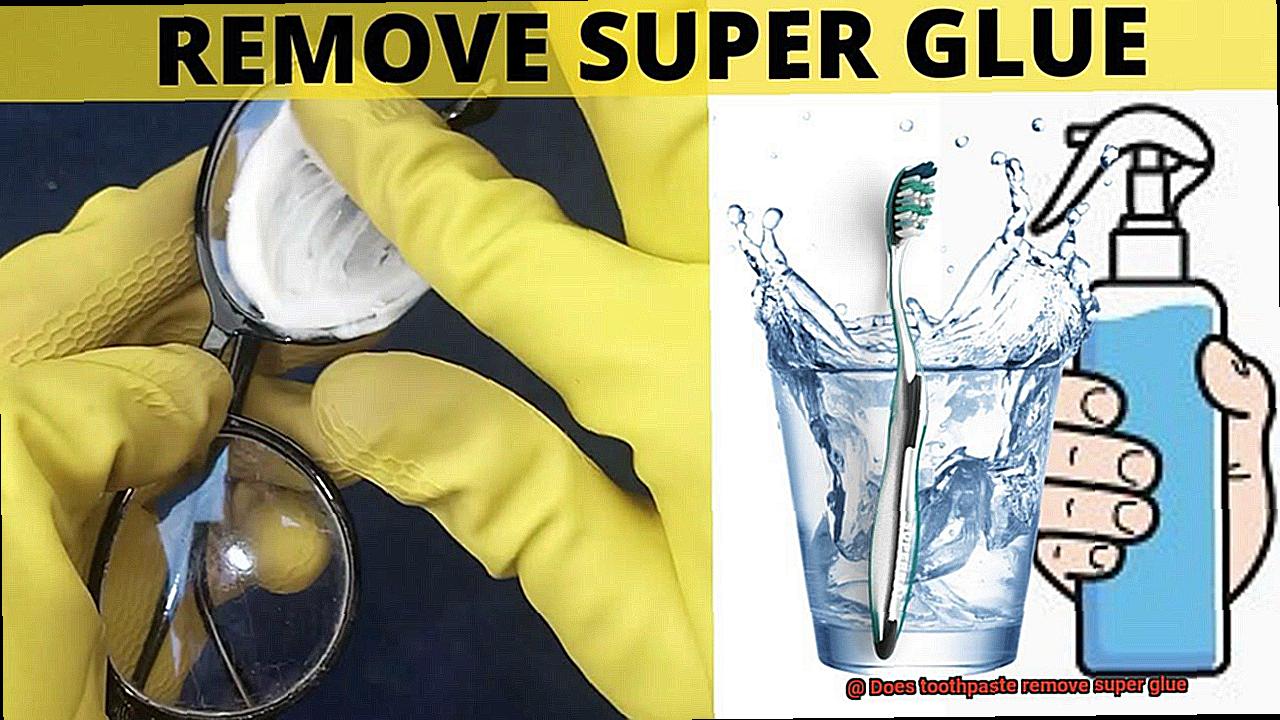
Toothpaste, that trusty oral hygiene companion, has a secret power beyond keeping your pearly whites sparkling. It can actually be used as a super glue remover. How, you ask? Well, it all comes down to toothpaste’s abrasive properties.
You see, toothpaste contains gritty ingredients like hydrated silica, calcium carbonate, and baking soda. These little warriors have a textured feel that allows them to scrub away particles and stains from your teeth. But their powers don’t stop there. When applied to a surface with super glue, these abrasive particles work their magic by loosening and breaking apart the adhesive, making it easier to remove.
But before you go grabbing any old toothpaste from your bathroom cabinet, there are a few things to consider. To effectively remove super glue, choose a non-gel toothpaste with high abrasiveness. Gel toothpastes may not have enough abrasive particles to get the job done. And be wary of using whitening toothpastes, as they may contain bleaching agents that could damage the surface you’re treating.
To use toothpaste as a super glue remover, simply apply it directly to the affected area or use a soft cloth or toothbrush for better scrubbing action. Gently rub the toothpaste onto the surface in circular motions and let those abrasive particles do their thing. Depending on the strength of the super glue and the surface you’re treating, you may need multiple applications or additional methods for complete removal.
Now, it’s important to note that toothpaste’s success in removing super glue may vary depending on factors like surface type and duration of contact with the adhesive. It’s always a good idea to test toothpaste on a small inconspicuous area before going all-in on your prized possessions.
Chemical Properties of Toothpaste
Prepare to be amazed as we delve into the hidden superpowers of your everyday toothpaste. Beyond its role in keeping your teeth gleaming, toothpaste possesses mesmerizing chemical properties that make it a true dental hero. Join us on this captivating journey as we unravel the secrets behind toothpaste’s cleaning and protective abilities. Get ready to unlock the enchanting world of toothpaste.
The Mighty Abrasives:
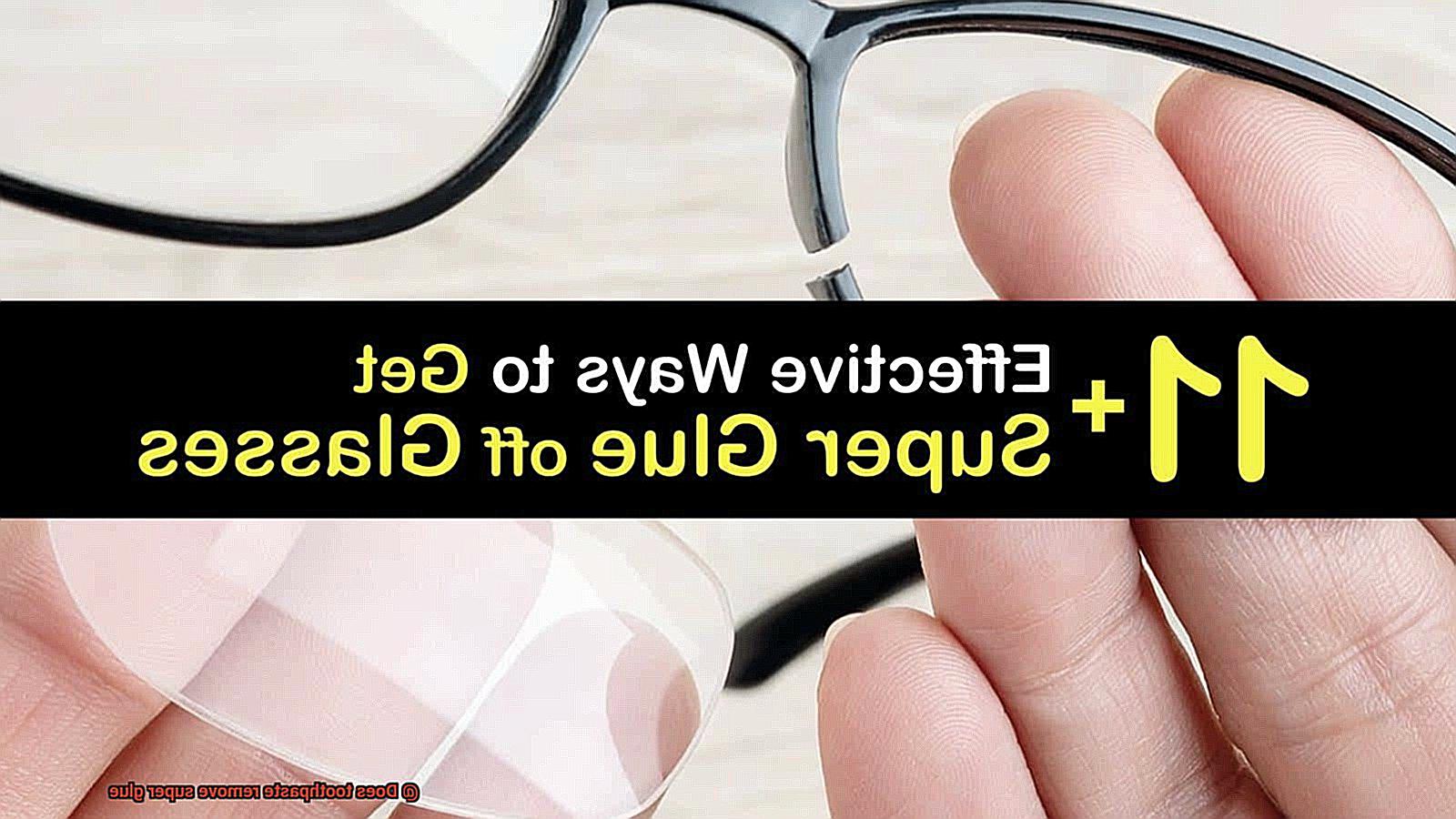
Meet the gritty warriors within your toothpaste – hydrated silica, calcium carbonate, and baking soda. These tiny particles are responsible for the scrubbing action that eliminates plaque and stains from your teeth. But their powers extend far beyond dental hygiene. When faced with stubborn super glue, these abrasive soldiers work their magic by loosening and disintegrating the adhesive, making its removal effortless.
Choosing Your Toothpaste Sidekick:
Not all toothpastes are created equal in the battle against super glue. Opt for a non-gel toothpaste with high abrasiveness for maximum effectiveness. Gel toothpastes may lack the necessary abrasive particles required for victory. Beware of whitening toothpastes that may contain bleaching agents, as they could damage the surface you’re treating.
Unleashing Toothpaste’s Magic:
To unleash toothpaste’s superpowers against super glue, simply apply it directly onto the affected area or use a soft cloth or toothbrush for enhanced scrubbing capabilities. Gently massage the toothpaste onto the surface in circular motions and watch those abrasive particles unleash their enchantment. Depending on the strength of the super glue and the surface at hand, multiple applications or supplementary methods may be needed for complete eradication.
A Word of Caution:
While toothpaste’s triumph over super glue is generally remarkable, certain variables must be considered. Factors such as surface type and duration of contact with the adhesive can influence its efficacy. We always recommend conducting a small-scale test on an inconspicuous area before entrusting your prized possessions entirely to toothpaste’s valiant efforts.
Limited Scientific Research on the Effectiveness of Toothpaste in Removing Super Glue
In your moment of desperation, you may have heard whispers of a potential savior: toothpaste. But does this common household product truly possess the power to dissolve the unyielding grip of super glue? While there is limited scientific research on the effectiveness of toothpaste in removing super glue, anecdotal evidence suggests that it may hold some surprising abilities.
Toothpaste, with its mild abrasives and chemical composition, has the potential to break down and dissolve certain substances. This intriguing property could explain why some people have experienced success in using toothpaste as a super glue remover. However, it’s important to note that toothpaste was not specifically designed or marketed for this purpose, resulting in a lack of comprehensive scientific studies on its effectiveness.
Most scientific research on super glue focuses primarily on its adhesive properties and how to remove it from different surfaces. Unfortunately, toothpaste is rarely included as a tested solution in these studies. Consequently, its effectiveness as a super glue remover remains uncertain.
If you find yourself tempted to reach for toothpaste as a remedy for your sticky predicament, caution must be exercised. While toothpaste may prove effective in certain cases, it is not a guaranteed or recommended method for removing super glue. Established and reliable alternatives such as acetone-based solvents or specialized glue removers are widely available.
Furthermore, the effectiveness of toothpaste in removing super glue may vary depending on the type of surface and the amount of glue applied. To truly understand the exact mechanisms through which toothpaste interacts with super glue and its overall effectiveness as a remover, more scientific research is needed.
Steps to Use Toothpaste as a Remedy for Super Glue Mishaps
We’ve all experienced the frustration of a super glue mishap, but fear not. I have a secret remedy that can save the day: toothpaste. Yes, the same toothpaste that keeps our smiles bright can also work wonders in removing super glue stains. So grab your tube of toothpaste and let’s dive into the steps to use it as a magic solution.
Step 1: Assess the Affected Area
Before taking action, assess the extent of the super glue mishap. Is it on a hard surface like glass or plastic, or a delicate fabric or upholstery? This will help you decide if toothpaste is suitable for the job.
Step 2: Choose the Right Toothpaste
Not all toothpastes are created equal when it comes to battling super glue. Look for toothpaste containing baking soda or hydrogen peroxide, proven to be effective in breaking down adhesive bonds.
Step 3: Apply Toothpaste to the Stain
Take a small amount of your chosen toothpaste and apply it directly onto the super glue stain. Ensure the entire affected area is covered with a thin layer of toothpaste.
Step 4: Gently Rub the Toothpaste
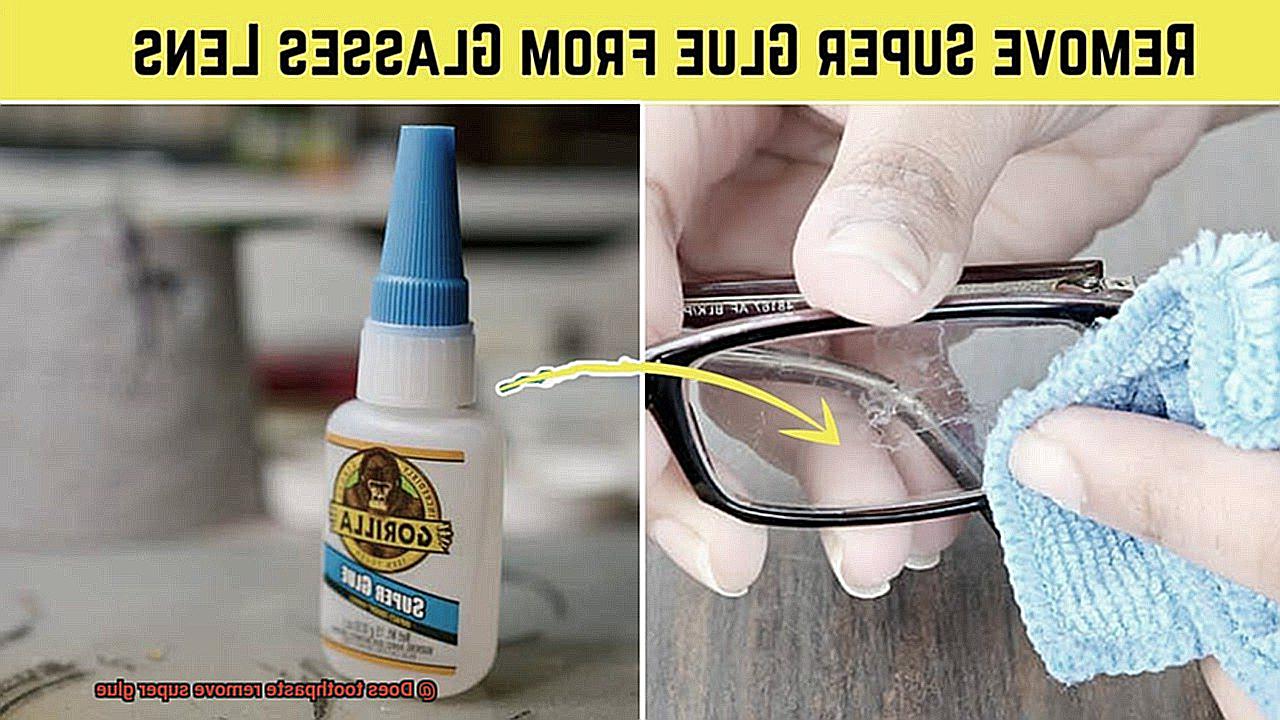
Using a clean cloth or sponge, gently rub the toothpaste into the super glue stain. Be cautious not to exert too much pressure and damage the surface or fabric.
Step 5: Let the Toothpaste Sit
Allow the toothpaste to work its magic by letting it sit on the stain for about 10-15 minutes. This gives it time to penetrate and loosen the adhesive bond.
Step 6: Scrub or Scrape off the Glue
Using a soft-bristled brush or plastic scraper, scrub or scrape off the loosened super glue. Start at one edge of the stain and work towards the center.
Step 7: Rinse and Repeat if Necessary
After removing most of the super glue, rinse the area with warm water to eliminate any remaining toothpaste residue. If traces of glue persist, repeat the process until the stain is completely gone.
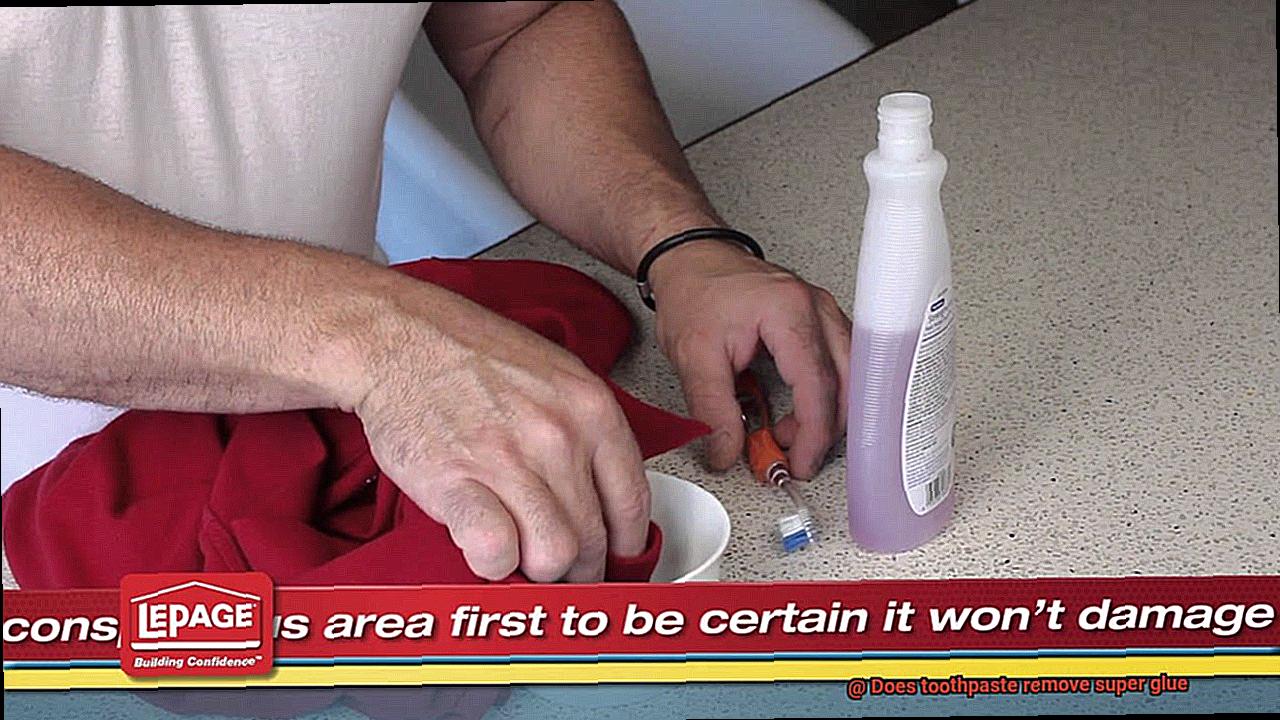
Step 8: Clean and Dry the Surface
Congratulations, you’ve successfully defeated the super glue monster. Finish off by cleaning the surface with mild soap and water to remove any leftover toothpaste residue. Thoroughly dry the area to prevent moisture-related issues.
Potential Side Effects of Using Toothpaste to Remove Super Glue
We’ve all experienced that heart-stopping moment when super glue binds our fingers together like an unbreakable bond. In desperate times, toothpaste may seem like an ingenious solution.
However, the potential side effects of using toothpaste to remove super glue can turn a sticky situation into a disastrous one.
Surfaces Under Siege:
Toothpaste, with its abrasive qualities honed for dental hygiene, can wreak havoc on delicate surfaces. Plastics and polished wood stand no chance against the vigorous scrubbing or rubbing required to remove super glue with toothpaste. The aftermath? Unsightly scratches and irreparable damage.
Unwanted Chemical Reactions:
Toothpaste comes in various formulations, each with its own unique blend of ingredients. Some of these ingredients can react unfavorably with super glue, resulting in discoloration or other undesirable effects on the surface you’re trying to free. Always consult the toothpaste label for potential chemical interactions.
Skin Suffering:
Banishing super glue often demands relentless effort, and toothpaste can be an accomplice in skin irritation and abrasions. The vigorous scrubbing or repeated rubbing necessary to loosen the adhesive can leave your skin irritated, inflamed, and as raw as a freshly caught sunburn.
Digestive Discomfort:
Accidentally ingesting toothpaste during attempts to remove super glue from your mouth can result in gastrointestinal discomfort. Your taste buds may be familiar with the minty freshness, but your stomach may revolt against this unexpected invasion. Keep toothpaste well away from sensitive areas.
Allergic Alarms:
Toothpaste harbors a cocktail of ingredients that could be triggers for unsuspecting individuals with allergies or sensitivities. Applying toothpaste directly onto the skin in an attempt to vanquish super glue can ignite allergic reactions or exacerbate existing skin irritations. Know your allergies before embarking on this potentially hazardous journey.
Eye and Mucous Membrane Misery:
Under no circumstances should toothpaste be employed near your precious eyes or sensitive mucous membranes to remove super glue. The consequences can range from irritating discomfort to infection-inducing disasters. Seek professional assistance if super glue trespasses onto these delicate territories.
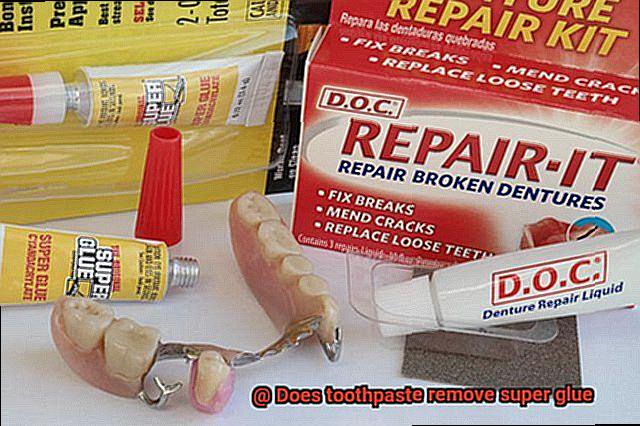
Specialized Adhesive Removers Available in the Market
In this comprehensive guide, we will explore the various types of specialized adhesive removers available in the market. From acetone-based removers to citrus-based alternatives and specialized formulas for specific adhesives, we will delve into their pros, cons, and important usage information. By the end of this guide, you’ll be equipped with the knowledge to choose the best adhesive remover for your specific needs.
Acetone-Based Adhesive Removers:
Acetone-based removers are highly effective in breaking down the chemical bonds of super glue, making them a popular choice.
Pros:
- Rapid and efficient action.
Cons:
- May cause damage to certain surfaces like plastics or painted surfaces. Pre-testing on a small area is crucial before application.
Citrus-Based Adhesive Removers:
These removers contain natural citrus extracts that dissolve adhesives without harming the surface.
Pros:
- Considered a safer alternative to acetone-based removers.
- Pleasant scent.
Cons:
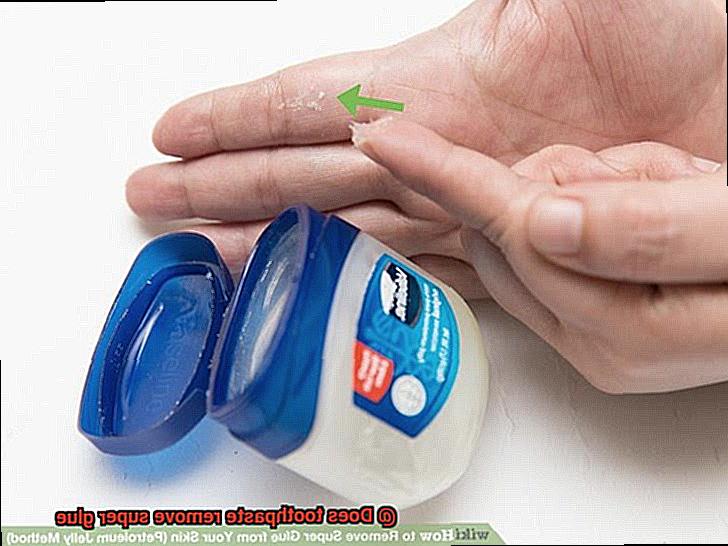
Specialized Formulas for Specific Adhesives:
Certain adhesive removers are designed for removing specific types of adhesives like epoxy or silicone.
Pros:
- These specialized formulas target the unique chemical composition of these adhesives for optimal removal.
Cons:
- May lack versatility for general adhesive removal needs.
Application Options:
- Adhesive removers come in various forms such as liquids, gels, sprays, and wipes, offering versatility for different tasks.
Pros:
- Allows users to choose the most convenient option.
Cons:
- Different application methods may have varying effectiveness.
Proper Usage and Safety Precautions:
To ensure safe and effective use of adhesive removers, always follow the manufacturer’s instructions carefully.
- Use protective gloves and ensure adequate ventilation when handling these products.
- Household alternatives like rubbing alcohol or acetone-containing nail polish remover can be used, but exercise caution.
mK9dt9UG_uM” >
Also Read: How to Remove Glue From Mirror?
Conclusion
Toothpaste, that humble companion in our daily oral care routine, has long been rumored to possess a secret power beyond its primary function. Yes, you guessed it right – the ability to remove super glue. But is this just an old wives’ tale or is there some truth behind it? Well, let me tell you, my friend, toothpaste does indeed have the potential to come to your rescue when faced with a sticky situation involving super glue.
Picture this: you’re diligently working on a craft project, gluing pieces together with precision and care. Suddenly, disaster strikes. A blob of super glue finds its way onto your precious masterpiece…and sticks like there’s no tomorrow. Panic sets in as you frantically search for a solution. And that’s when toothpaste steps in as the unlikely hero.
With its gritty texture and mild abrasiveness, toothpaste acts as a gentle exfoliant for stubborn super glue. By applying a small dab of toothpaste onto the affected area and rubbing it in circular motions with a soft cloth or sponge, you can gradually break down the bond between the glue and the surface. It’s like watching magic unfold before your eyes.
Toothpaste doesn’t just stop at removing super glue from surfaces; it can also work wonders on your skin. Accidentally glued your fingers together? Fear not. Simply apply toothpaste to the affected area and gently massage it until the bond weakens and releases its grip.
Now, I must stress that not all toothpastes are created equal in their adhesive-busting capabilities. Opt for toothpastes with higher levels of abrasiveness or those specifically formulated for stain removal. These tend to have more success when tackling super glue mishaps.
So, next time you find yourself in a sticky situation (pun intended), don’t despair. Reach for that trusty tube of toothpaste and let its magical powers do their work. Just remember to test it on a small, inconspicuous area first to ensure it won’t cause any damage.
In conclusion, toothpaste does have the potential to remove super glue from surfaces and even skin. It’s a handy trick to keep up your sleeve for those unexpected bonding mishaps.

